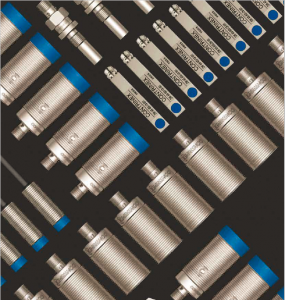Many manufacturers in the automotive industry and other automated facilities require non-contact presence detection to assist in safely and accurately changing tools in presses. To do so, these manufacturers rely on various solutions. One approach is to use an inductive proximity sensor. For example, when used on a tool-press, the sensor detects the top and bottom halves in alignment at the point of the tool-press being completely closed. This allows molding tools to be changed safely and efficiently. Cost-effective and reliable, here are just a few reasons why you should consider inductive proximity sensors.
What are inductive proximity sensors?
Before we get into the advantages of these sensors, it’s best to consider what they actually do. Inductive sensors detect the presence of a metallic object. They range in variety, with some able to resist high temperatures and others high pressure, or washdown conditions. Basic inductive sensors are the most common thanks to their accuracy, reliability, and cost-effectiveness.
The advantages of inductive proximity sensors
So, why use inductive proximity sensors in the first place? There are many reasons:
- Cost-effective: Basic inductive sensors are much more affordable than other types of sensors. Plus, their reliability ensures you will not have to make many costly repairs in the future.
- Efficiency: With inductive proximity sensors, setup times are reduced, and molding tools are changed automatically. This reduces the overall time it takes to produce items.
- Reliability: Inductive proximity sensors are extremely accurate, reducing the risk of production failures and potential damage to tools or the tool-press.
Locon Sensor System offers its own line of specialized inductive sensors, as well as being a long-time licensed distributor of Contrinex inductive proximity sensors. Contact us today to learn more.

